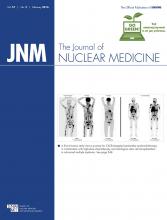Abstract
Gastrointestinal bleeding scintigraphy performed with 99mTc-labeled autologous erythrocytes or historically with 99mTc-sulfur colloid has been a clinically useful tool since the 1970s. This article reviews the history of the techniques, the different methods of radiolabeling erythrocytes, the procedure, useful indications, diagnostic accuracy, the use of SPECT/CT and CT angiography to evaluate gastrointestinal bleeding, and Meckel diverticulum imaging. The causes of pediatric bleeding are discussed by age.
- GI bleeding scintigraphy or scan
- radiolabeled red blood cells or erythrocytes
- SPECT
- SPECT/CT
- CTA
- pediatric GI bleeding by age
- Meckel’s diverticulum
Footnotes
Published online Dec. 17, 2015.
Learning Objectives: On successful completion of this activity, participants should be able to describe (1) diagnostic uses of gastrointestinal bleeding scintigraphy; (2) proper methodology for performing the procedure; (3) the importance of correlative and hybrid imaging; (4) interpretive criteria to make a clinical diagnosis; (5) special considerations in children; and (6) imaging of Meckel diverticula.
Financial Disclosure: The author of this article has indicated no relevant relationships that could be perceived as a real or apparent conflict of interest.
CME Credit: SNMMI is accredited by the Accreditation Council for Continuing Medical Education (ACCME) to sponsor continuing education for physicians. SNMMI designates each JNM continuing education article for a maximum of 2.0 AMA PRA Category 1 Credits. Physicians should claim only credit commensurate with the extent of their participation in the activity. For CE credit, SAM, and other credit types, participants can access this activity through the SNMMI website (http://www.snmmilearningcenter.org) through February 2019.
- © 2016 by the Society of Nuclear Medicine and Molecular Imaging, Inc.







